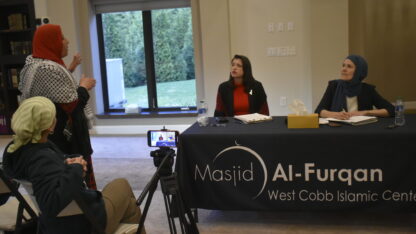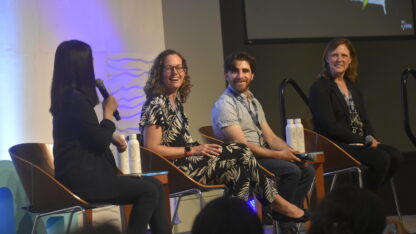Preventing Teen Pregnancies Can Save Taxpayers Money
Dariel Fowler is a rising sophomore at South Cobb High School. She says she sees a lot of girls at her school who are pregnant.
“They drop out of school, they can’t take care of their kids or they [get] abortions,” she says.
But not her. In 2010, Dariel was one of the 200 at-risk youth chosen to participate in a five-year afterschool teenage pregnancy prevention program. The program has centers in Monticello, Barnesville and Atlanta.
Teen pregnancies cost taxpayers in Georgia about half a billion dollars every year, according to a study funded by the Centers for Disease Control and Prevention.
So the federal government has put a lot of money into pregnancy prevention programs – including the Carrera Teenage Pregnancy Prevention Program in Georgia.
The Morehouse School of Medicine received a five-year $7.5 million federal grant that expires this year. That’s more than $7,500 a year spent on each student for after-school sexual education classes, college tours and other activities.
“It’s not that young people don’t know a lot of time, it’s just being motivated to use contraceptives or not to engage in sex,” says project director Dr. Mary Langley. “So you need to expose these young people to cultural and other activities.”
“These types of programs not only prevent pregnancy as well as HIV and STDs,” Romero says. “But they also impact educational outcomes – more of these teens go to college.”
Dr. Sarah Maness is a research associate in the University of South Florida College of Public Health. In 2013, she completed a study that found that overall teen pregnancy prevention programs are effective. But she says there still needs to be more research done on what aspects of the program are effective in reaching minority teens.
“The pregnancy rates in the United States are the lowest they have ever been, but rates for African-American and Hispanic teens are not as low for white teens and they’re not decreasing as fast either,” Maness says. “We have programs that show they do work, but since we still have health disparities in this country, there are gaps.”
All of the boys and girls in the Georgia Carrera program have avoided pregnancies.
“It looks like you’re spending a lot of money upfront, but, in the long-term, you’re saving two to three times what you would have spent, providing those governmental type support services,” Dr. Mary Langley says.
Langley says that, because parents are involved, it also has a ripple effect in the low-income communities it works in. She’s now looking for funding to continue the program.
9(MDAxODM0MDY4MDEyMTY4NDA3MzI3YjkzMw004))







